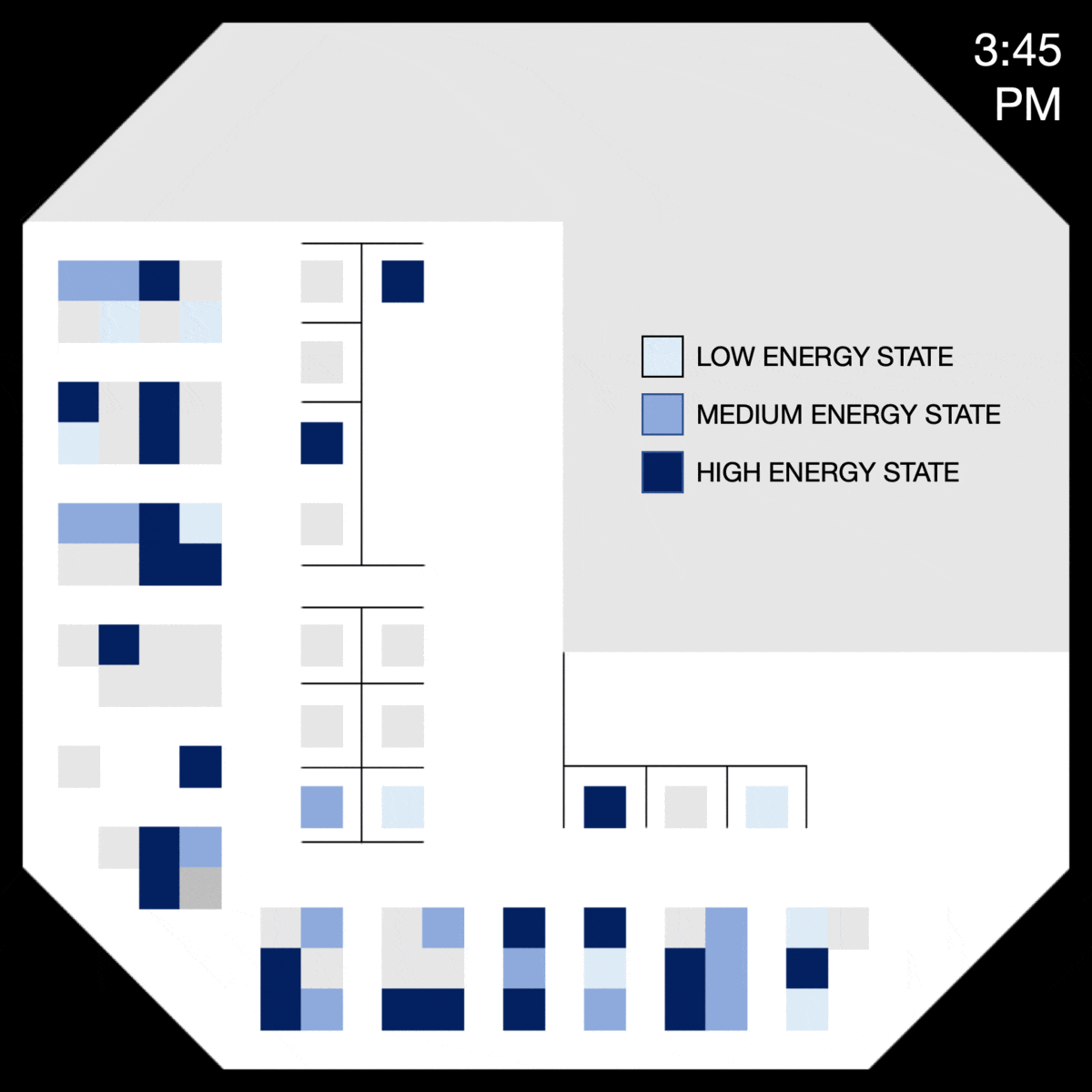Ambient sensing of occupant space use
Understanding the behavior of occupants in buildings has vital implications for improving the energy efficiency of building systems and for providing knowledge to designers about how occupants will utilize the spaces they create. However, current methods for inferring building occupant activity patterns are limited in two primary areas: First, they lack adaptability to new spaces and scalability to larger spaces due to the time and cost intensity of collecting ground truth data for training the embedded algorithms. Second, they do not incorporate explicit knowledge about occupant dynamics in their implementation, limiting their ability to uncover deep insights about activity patterns in the data. In this work, I developed a methodology for clustering occupant activity patterns from plug load sensor data at the desk level. The method makes us of a common unsupervised learning algorithm -- the Gaussian mixture model -- and it incorporates explicit knowledge about occupant presence and absence in order to preserve adaptability and effectiveness. The method offers key insights into spatially and temporally granular occupancy states and space utilization that could not otherwise be obtained.

This figure demonstrates how occupant activity states can be visualized on a building's floorplan -- offering insight into occupants' space use in real time.
Publications
Andrew Sonta, Perry E. Simmons, and Rishee K. Jain. Understanding building occupant activities at scale: An integrated knowledge-based and data-driven approach. Advanced Engineering Informatics, 37:1–13, 2018. [GitHub] [PDF]Andrew Sonta, Perry E. Simmons, and Rishee K. Jain. Towards automated inference of occupant behavioral dynamics using plug-load energy data. In Congress on Computing in Civil Engineering, Proceedings, June 2017. Seattle, WA. [PDF]